Leaving Your Dog Home Alone: Tips & Tricks
- Anja Boecker
- Updated: 2023-09-13
As much as you love being with your dog, you unfortunately can't take him everywhere. Sometimes your pet has to be left alone. For some pets, this is the end of the world: they bark, howl, and tear up the furniture. In this article, you will learn how to prevent this from happening.
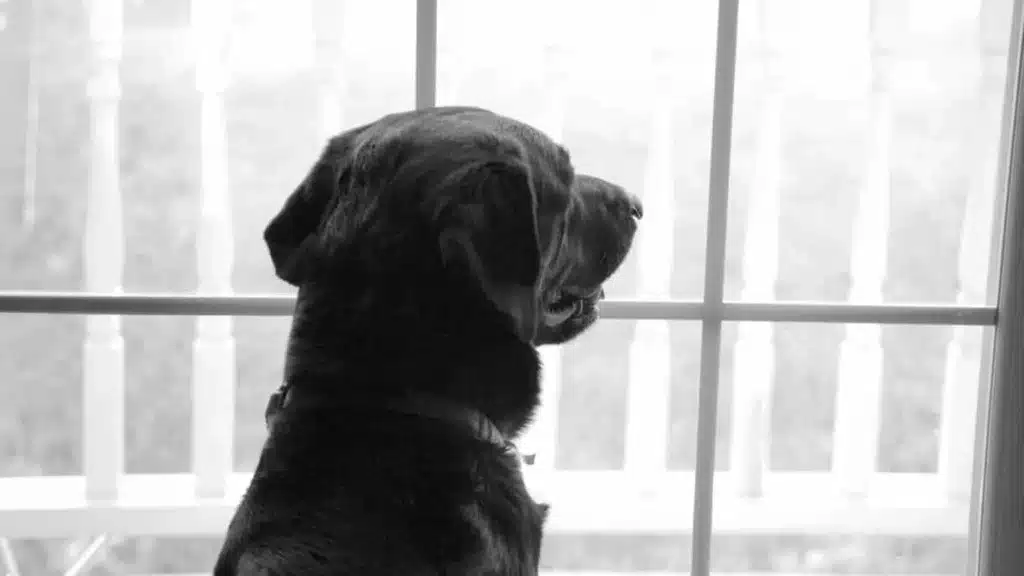
When we look at our four-legged friends, whose trusting eyes look at us with so much love and affection, we often find it hard to even think about leaving them alone.
But life has many responsibilities that we must face without our faithful companions by our side. The good news is that a dog living alone does not have to be unhappy.
All it needs is a little training, patience, and the right tips and tricks, which we have compiled in this comprehensive guide. So let's get started on the road to a carefree life for our pet alone!
During the time when the furry noses are alone, they are under constant stress. They only come to rest when their master or mistress returns home.
Of course, this is a big commitment. For your dog and for you. But it doesn't have to be: Dogs are social animals and want to spend a lot of time with people. But they can also spend a few hours alone.
This requires some training. Of course, your pet will not get used to it overnight. But with a little patience and practice, it will not be a problem. Then your pet can be left alone for a few hours.
Here are some important tips to keep in mind as you train.
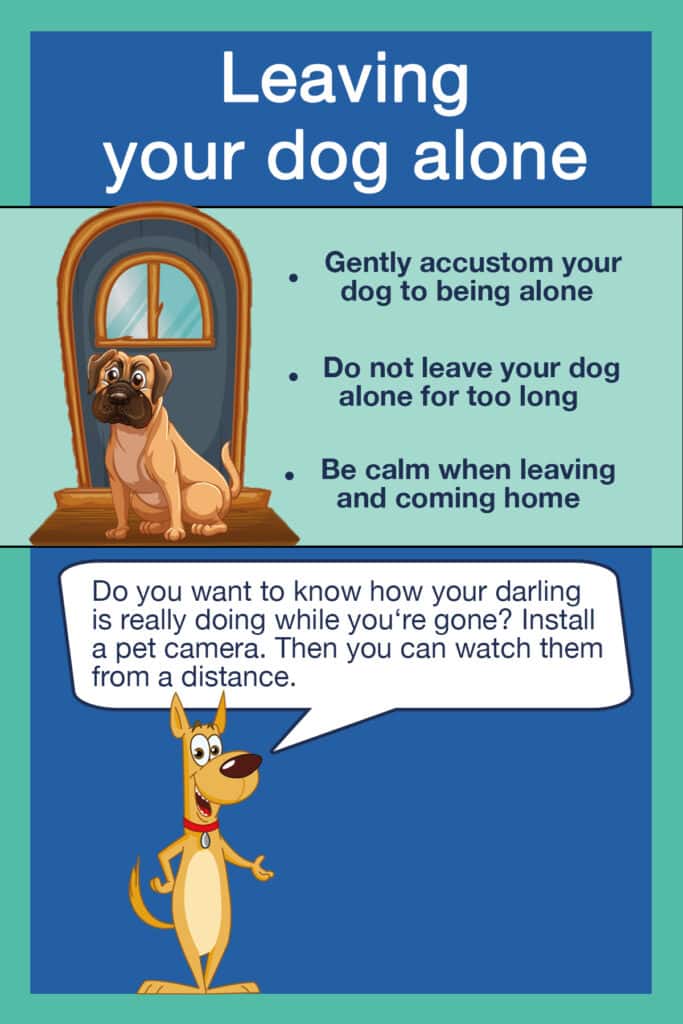
Start as Early as Possible
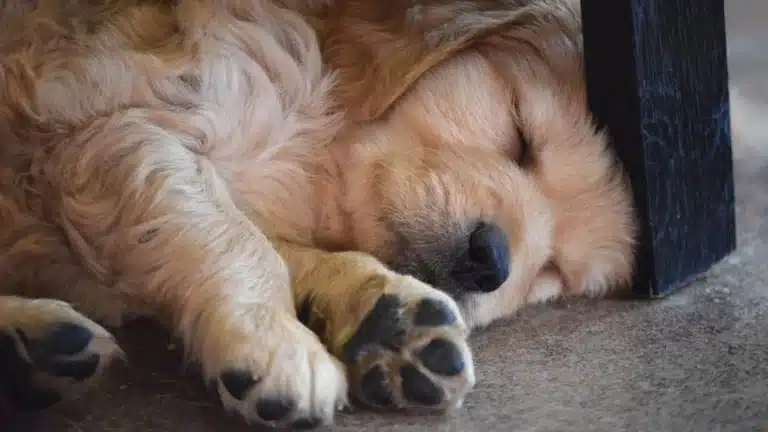
You should begin training as early as possible. Start with your puppy. For puppies, it is best to begin training as soon as they are settled in their new home. Older dogs can be trained at any time.
Show him that this is normal. It is not bad for him to be alone for a while. That way he won't have problems with it later.
But is your dog an adult and has never been away from you for more than 5 minutes? Then it is much harder to teach him to be alone. The exercises are the same as for puppies. It just takes a little longer and you have to be very consistent.
Do you know in advance that your pet will need to be alone for a long time? In that case, start training right away. Leave him alone for a short time and then come back. This will teach him that he doesn't have to be around you all the time.
You can also get him used to being around other people at an early age. When you are away for a few hours, people you know can take care of him and spend time with him.
How Long Can My Dog Be Left Alone?
One of the most common questions is: "How long can my dog be left alone?" Basically, it depends on the dog's age, health, and temperament.
While some dogs become restless after only a few hours, others can easily spend an entire working day alone. They can be left alone for several hours right from the start. Others need their owner much more and do not like to be alone.
However, as a rule of thumb, an adult dog should not be left alone for more than 4 to 6 hours and a puppy should not be left alone for more than 2 hours. 4 to 5 hours should be doable for any adult dog with some practice.
However, your dog should never be left alone for more than 8 hours at a time. After that, someone should take care of him. Your dog needs food, water and exercise.
If your dog needs to be left alone for a long time or overnight, you should take him somewhere else. Perhaps relatives or friends can take him in. Otherwise, there are boarding kennels. They will take care of your pet during this time.
When you get back, you should spend a lot of time with your pet. After all, there are still a few hours of cuddling to catch up on.
When Exactly Should I Start?
When to leave your dog alone depends on his age, personality, and past experiences. Here are some general guidelines to help:
How to Stop Puppies
- From the 8th to the 10th At this early stage, a puppy should not be left alone for long periods of time, as they are still very affectionate and dependent. Training should begin with very short intervals of 5 to 10 minutes.
- 3 to 6 months: At this age, exercise time can be gradually increased up to an hour, but avoid leaving the puppy alone for long periods of time on a regular basis.
- From 6 months: From this age, you can begin to gradually increase the amount of time your child spends alone, but it is recommended that you do not extend the time beyond 4 hours.
Young and Adult Dogs
- From one year: At this point, your dog should be able to stay alone for about 4 to 6 hours, assuming he is well-trained and used to the routine. However, every dog is different and some may need more time to adjust.
- Adult dogs: An adult, well-behaved and trained dog can be left alone for up to 6–8 hours, but this should not be the rule. It is always better to have someone watch the dog in between or to allow the dog to go outside to a safe place.
Older dogs
- Older dogs: Older dogs, especially those with health problems, should not be left alone for long periods of time. They need special care and more frequent exercise.
General Tips
- Start of training: Regardless of the dog's age, training to be left alone should begin as early as possible.
- Individual needs: Always consider your dog's individual needs and personality.
- Positive experiences: Make your dog's time alone a positive experience by providing toys and treats.
- Create routines: Help your dog feel safe and comfortable by establishing clear routines.
Remember that it is always better to gradually increase the amount of time your dog spends alone and never leave him unsupervised for long periods of time, especially if he is not used to it.
It is a good practice to have a dog sitter or someone you trust take care of your dog when you are away for an extended period of time.
What to Do if You Leave Your Dog Home Alone

Give your furry friend some time to himself. If you're always in the same room with him and he follows you everywhere, he won't know any different. If you leave him alone for a long time, he won't understand the world. So you should not watch him all the time and leave him alone sometimes.
If it follows you, you can tell it to wait in a room. This works best with the Stay command. When he obeys and waits, you can reward him. Now you should slowly get him used to staying in a room alone.
Leave the room for a few seconds and close the door behind you. After a short time, return to the room. If your protégé was quiet during this time, praise him for it.
You can gradually increase the amount of time your dog spends alone. But make sure the time is not too long. If your dog is upset or even stressed, the training is useless. He needs to learn that being alone is not a bad thing.
Can he stay alone for a few minutes after a while? Then you can take the training a step further. When you leave the apartment or house, it becomes more difficult for your dog.
But he has to get used to it too. In the beginning, go away for a short time and then come back. If this works well, you can slowly increase the time intervals. It is important that no one stays with your dog during these training periods. He needs to get used to being alone.
Under no circumstances should you go back to your pet when he barks or whines. This will only show him that whining works. He would do it again and again and never learn. Even if it's hard for you, you must be consistent.
Don't give your dog a big goodbye. That would be too upsetting for him and would only make it harder for him to be alone. Even when you get home, don't treat your loyal friend any differently than you normally would. After all, being alone should become something normal for him.
You should not practice with your pet on a regular basis. It must be unexpected. Later on, he must be prepared to be alone for a few hours at a time.
8 Step Training Plan
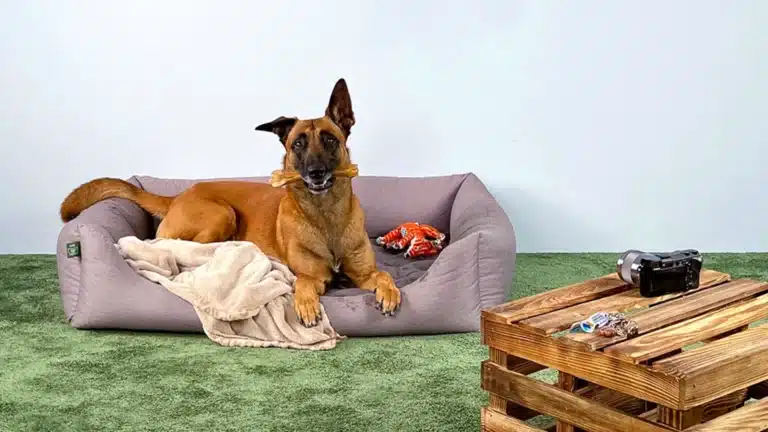
Of course, "being alone" can be very challenging for your dog. That is why patient and gradual training is the key to success. Here is a step-by-step guide:
1. Preparation
Before you begin training, make sure your dog is healthy and has all of his basic needs met: He should have had enough exercise and not be hungry or thirsty.
2. Safe Room
Create a safe and comfortable place for your dog to stay while you're away. This can be a special room or area with a gate, equipped with a cozy dog mat and his favorite toys.
3. Short Practice Periods
Start with very short practice sessions of just a few minutes during which you leave the room. Stay within hearing and sight at first, then return quietly and without fuss.
4. Gradual Increase in the Duration of the Absence
Gradually increase the amount of time you are away and make sure your dog remains calm. If he shows signs of anxiety, reduce the time and work more slowly.
5. Establish Rituals + Positive Reinforcement
Establish clear rituals before you leave, such as giving a specific treat or saying a specific word. This helps the dog understand that you are leaving, but also that you will be back. Always praise your dog for remaining calm and relaxed while you are away. Use treats and affectionate words as positive reinforcement.
6. Return Calmly
When you return, don't greet your dog too enthusiastically. Keep the greeting calm and unexcited so that the separation does not become a big event.
7. Vary the Phases of the Exercise
Vary the length of your exercise periods so your dog doesn't learn to predict how long you will be away. This can help build his confidence and independence.
8. Monitoring
When you start leaving your dog alone for long periods of time, it can be helpful to install a pet camera to monitor his behavior when he is alone.
By following these steps consistently, you can help your dog slowly get used to being alone. It is important to be patient and adapt the training to your dog's individual needs and pace.
Every little success is a step in the right direction, and in time your dog will learn that being alone is nothing to be afraid of.
Too theoretical for you? If you prefer a visual approach, our app offers step-by-step video instructions to teach your dog to "be alone". Learn more about our app here.
If you find that your dog is showing extreme anxiety despite regular training, don't hesitate to seek advice from a veterinarian or professional dog trainer.
Separation Anxiety in Adult Dogs
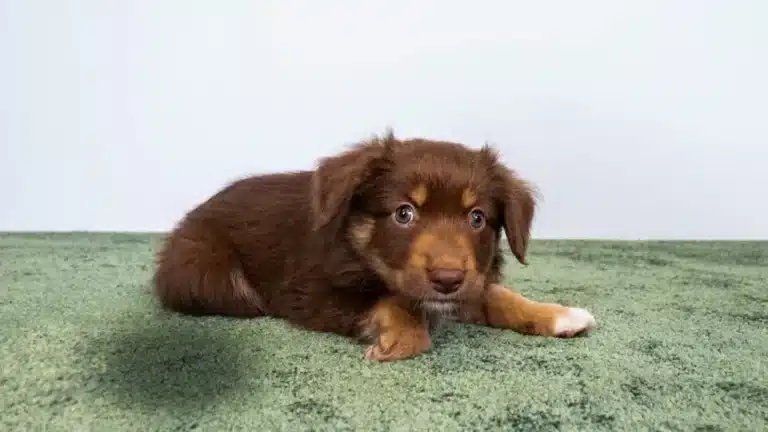
Some dogs need the closeness of their humans more than others. If your dog was not accustomed to being alone as a puppy, he or she may have separation anxiety. If the above exercises don't help and your furry friend just won't stop whining, try the following tips.
Sometimes your furry friend knows you're leaving through small cues. Putting on your jacket and shoes or taking away your keys are conspicuous actions. He associates it with something bad and gets anxious before you are even gone.
To avoid this, you should occasionally get ready to go without actually going. When your dog realizes that his excitement was for nothing, the signals will eventually become neutral to him. This takes away his fear.
Now practice with him as described above. Keep the time he is alone very short at first. Extend them only minimally, as excitement will be a relapse for him. Even if this training takes a long time, it is the only way to get your dog used to being alone.
If you like, you can also film your dog with a camera while you are away. That way you can control what he does during that time. He may only be sad for the first few minutes and then fall asleep because he is bored. This way you can always see how the training is going.
Make Your Home Comfortable
Before leaving your dog alone for a few hours, you should take a few precautions. If he needs to go to the bathroom, he should be allowed to go outside first. Otherwise, he will be unhousetrained or stressed.
It's best to take your protégé for a walk beforehand. That way he can really let off steam and be much calmer afterwards. He may even sleep without you. In any case, he won't mind not moving so much for a while.
To keep your pet from getting bored, you can give him a special toy. This will make it easier for him to be alone. If he likes the toy and only gets it when he is alone, he will associate the time with something positive. He may even come to look forward to it.
If your dog reacts to outside noise, you can turn down the radio. This may calm him down and drown out other noises. It is best to provide him with a comfortable dog bed. This will allow him to relax or even sleep alone. His favorite stuffed animal can also help him feel more comfortable being alone.
Accessories
Before you start, you need:
- Dog cage or grid
- Cozy blankets and pillows
- Favorite toy
- Treats
- Possibly calming music
- Possibly camera
Guides and Tips
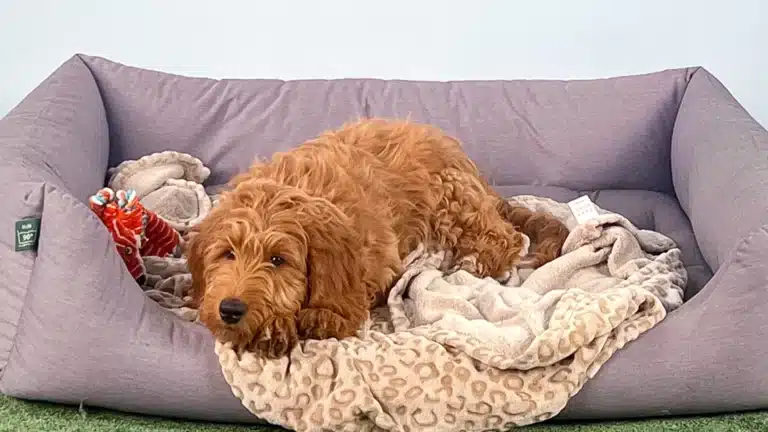
Leaving a dog alone can be a challenge for both dog and owner. Here are some tips and tricks to make it easier for your dog:
Preparation
- Get enough exercise: Make sure your dog gets plenty of exercise before you leave so he stays calm and relaxed while you're away.
- Comfortable environment: Create a comfortable and safe environment for your dog to stay in while you are away.
Create a Spatial Boundary
Creating a physical boundary, such as a fenced area or dog cage, can be a safe "den" for your dog to retreat to. Remember to keep this positive and not use it as a punishment.
Employment
Even when you're not home, your dog needs activity. Fillable toys that can be filled with treats are a great way to keep him occupied. You can also set up a game of hide-and-seek with his food to encourage his hunting instincts.
- An intelligent toy: Use smart toys to keep your dog mentally stimulated and occupied while you are away.
- Chewable: Give your dog chews to help him relax and pass the time.
Safety and Security
- Monitoring: Install a pet camera to monitor your dog and make sure he is safe and calm when you are not home.
- Emergency contacts: Leave emergency contacts and information with neighbors or friends who live nearby in case something happens while you are away.
Quiet Farewell and Greeting
Avoid dramatic goodbyes and greetings to reduce the dog's anxiety.
Dog Destroys Home When Left Alone
When your dog destroyed, when he is alone, it is usually a sign of separation anxiety or boredom. Here are some steps you can take to solve the problem:
Step 1: Identify the Problem
First, try to determine the exact cause of the behavior. There may be many reasons, such as separation anxiety, boredom, or lack of proper exercise and mental stimulation.
Step 2: Safe Room
Create a safe, "dog-proof" room for your dog. This can be a room where potentially dangerous or breakable items have been removed and where he has access to his favorite toys.
Step 3: Routine and Structure
Make sure your dog has a well-structured daily routine with plenty of exercise and mental stimulation.
Step 4: Training Plan
Develop a training plan, as described in the article, to teach your dog to be alone. Start with short intervals and gradually increase the duration while using positive reinforcement to reward good behavior.
Step 5: Employment
Give your dog plenty of things to do while you're away. This could be a chew toy, a fetch toy, or a frozen food-filled Kong.
Step 6: Expert Help
If you find that the problem persists despite the above measures, consider seeking the help of a professional dog trainer or behaviorist.
In some cases, destructive behavior may have a medical cause. If you suspect this may be the case, you should consult a veterinarian.
Tips
- Stay calm: If you come home and find the house in disarray, try to remain calm. Yelling or punishing may frighten your dog even more and make the problem worse.
- Positive reinforcement: Reward your dog when he is calm and relaxed to encourage this behavior.
- Monitoring: Use a pet camera to observe your dog's behavior when alone and better understand what is causing the problem.
By using a combination of these strategies, you can help your dog feel more comfortable being alone and reduce the risk of destructive behavior.
Frequently Asked Questions
You should never leave your dog alone for more than eight hours, because he needs fresh water, food and exercise. Leaving your dog alone for shorter periods of time is perfectly fine.
Barking is a sign of stress and anxiety. To reduce barking, it is important to create a calm environment and make the dog feel safe. Soothing dog music can help.
The easiest way to start training is when your dog is a puppy. Leave your dog alone in another room for short periods of time. Reward him if he stays calm. Repeat these exercises with longer and longer periods of time alone.
My Conclusion
Dogs are social animals and need a lot of attention from us. However, they can get used to being left home alone for a few hours. Even if it seems hopeless at first, with a little practice, time without you will become normal for your dog.
It is important to start training as early as possible. Then your dog will quickly realize that he does not have to be around you all the time.
If he stays quiet without you, you can reward him. But don't get too excited when you leave or come back. This excitement will quickly transfer to your dog. However, your goal is to make this something normal for him. So be no more careful than usual when you leave him alone.
Leaving your dog alone is not an easy task, but with patience, training and love, it can be done. Remember that each dog is an individual with unique needs.
Engage with your dog and work together to give him a carefree time alone. With time and practice, your dog will learn to feel safe and secure in your absence.

My name is Anja Boecker, and I am a certified dog trainer and behavior consultant. With these articles, I want to help you to understand your dog better and to build an inseparable bond.
Share Now:

